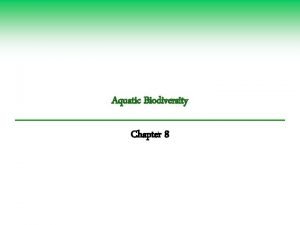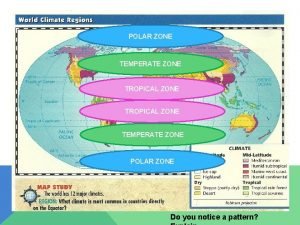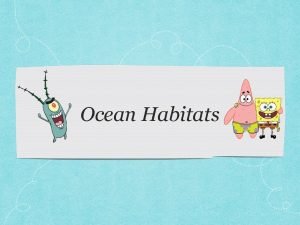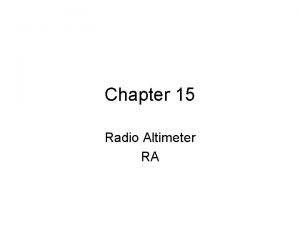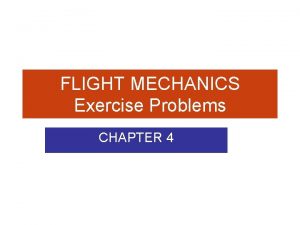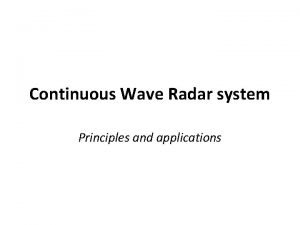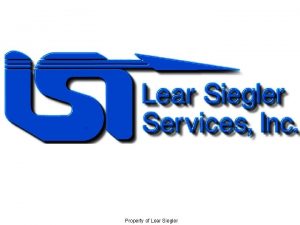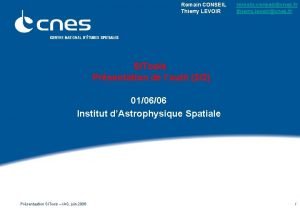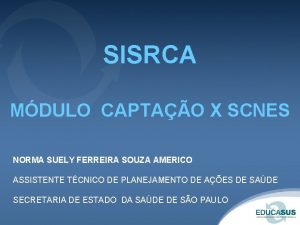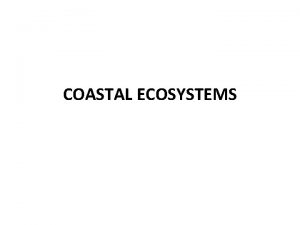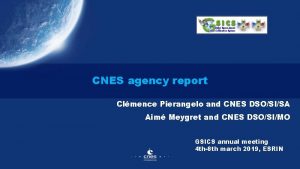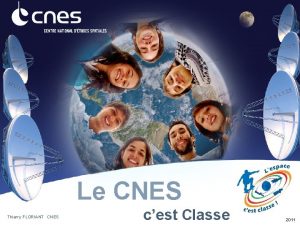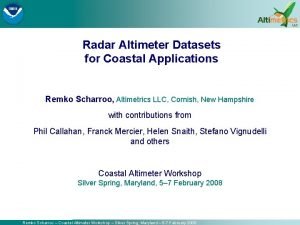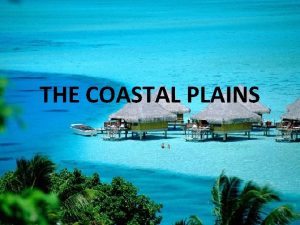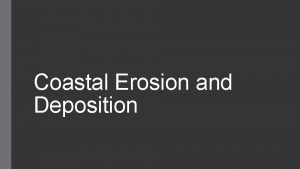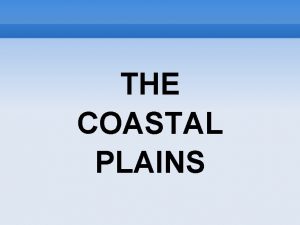CNES initiative for altimeter processing in coastal zone













- Slides: 13

CNES initiative for altimeter processing in coastal zone : PISTACH Juliette Lambin – Alix Lombard Nicolas Picot Coastal Altimetry Workshop - February 5 -7, 2008

CNES initiative ■ Current level 2 data set (O/I/GDR) distributed to users are not appropriate to coastal studies (see later). ■ Those limitations are related to : w Instruments technology : · Insufficient data mapping related to the altimeter and/or radiometer · Tracking limitations (impacting mainly inland water data on Jason-1) w Processing chains : we use the same standards to process the data whatever the surface is. Those processing chains have been developed (and validated involving OSTST group among others… ) for deep ocean conditions · · · Standard 1 Hz data sampling at level 2 (while altimeter provide 10 or 20 Hz data) Same retracking algorithm (brown model, MLE, . . ) Same radiometer data processing Same geophysical corrections (tides, dynamic atmospheric correction, atmospheric models, …) …. ■ Thanks to the DIODE coupling mode, Jason-2 altimeter, then Alti. Ka (and with the advantage of Ka band technology), will gather more data close to land. Coastal Altimetry Workshop - February 5 -7, 2008

CNES initiative ■ More and more applications (and user requests) for coastal applications. And coastal products are part of Jason-2 scientific objectives we need to improve Jason-2 products close to land. ■ Using experience from ALTICORE, ALBICOCCA, MERSEA, ECOOP, …, a CNES ITT was issued in July 07 (all Jason-2 partners being informed of this initiative : NASA/JPL, NOAA and Eumet. Sat) and this ITT being analysed by ESA team : w CLS proposal was selected. w Work started November 2007. w This involves several groups either data users or experts: LEGOS, IFREMER, CEMAGREF, LMTG, … all on France side ■ In parallel, ESA has issued a similar ITT to European countries (excluding France): goal is to compare CNES results with ESA results. Both studies are followed by ESA and CNES in a close partnership, key progress meeting will be co-organized to share results. Coastal Altimetry Workshop - February 5 -7, 2008

CLS PISTACH project ■ PISTACH major objective : w Develop new standards for coastal applications w Generate level 2 products during Jason-2 Cal. Val phase, disseminated those products to PI groups (OSTST PI community and others), validate, adapt and present results during 2009 OSTST meeting w As for ocean processing our objective is to have OSTST approval for implemented methods ■ Notice that PISTACH is also covering inland water processing (not developed here and not part of OSTST) ■ PISTACH stand for : ‘Prototype Innovant de Système de Traitement pour l’Altimétrie Côtière et l’Hydrologie’ (ie Coastal and Inland water Innovative Altimetry Processing Prototype’) Coastal Altimetry Workshop - February 5 -7, 2008

Current level 2 limitations (among other) : Altimeter parameters Coastal Altimetry Workshop - February 5 -7, 2008

Current level 2 limitations (among other) : Sea State Bias ■ Current SSB solutions are global, based on empirical fits on SWH and wind parameters, using open ocean data only (bathymetry < -1000 m) ■ New studies (Tran et al Vandemark et al) have demonstrated the importance of sea surface conditions : w Sea State is influenced by : currents, tides, wind speed direction and strengh, … => All these parameters are highly variable over continental shelves => the EM bias behavior will certainly be different from one region to another. Coastal Altimetry Workshop - February 5 -7, 2008

Current level 2 limitations (among other) : Radiometer correction ■ Radiometer correction : Coastal Altimetry Workshop - February 5 -7, 2008

Current level 2 limitations (among other) : reference surface ■ Reference surfaces : Mean profile Coastal Altimetry Workshop - February 5 -7, 2008

PISTACH work packages ■PISTACH includes 3 major phases : w Phase 1: · user needs and structure of coastal products w Phase 2: · analysis and selection of fields to be taken into account in this product w Phase 3: · prototype implementation, validation and operations during Jason-2 Cal. Val phases Coastal Altimetry Workshop - February 5 -7, 2008

PISTACH Phase 1 ■ Phase 1: user needs and structure of coastal products November 07 to March 08 (to take into account PIs feedbacks and results from this meeting) : w Task 1. 1: User expectation analysis : · by analyzing various requests from groups like CASH, MERSEA, MFSSTEP, . . . w Task 1. 2: Define the information required in a level 2 product, and propose a structure for such a generic product : · (1 Hz / 20 HZ, global / local geophysical corrections, global / local weather fields …) w Task 1. 3: Analyze and quantify the possible processing improvement w Task 1. 4: Quantify the methodology of a level 3 product (including potential use of other instruments or insitu data) Coastal Altimetry Workshop - February 5 -7, 2008

PISTACH Phase 2 ■ Phase 2 : analysis and selection of new algorithms to be taken into account in this product - January 08 to June 08 w Task 2. 1: geophysical corrections · models inventory and analysis (quantify their potential and their limitations due to geographical area covered, time availability, . . . ). With particular attention to : tides models, atmospheric corrections, inverse barometer correction (DAC/Mog 2 DHR, …), and other fields (MSS, Geoids, iono correction, . . . ) w Task 2. 2: Identify and analyze new retracking methods w Task 2. 3: Identify and analyze new wet and dry correction methods from models w Task 2. 4: Identify and analyze new wet correction methods derived from radiometer data w Task 2. 5: Identify and analyze new SSB methods w Task 2. 6: Identify and analyze data editing strategy w Task 2. 7: Identify and analyze data covariance error Coastal Altimetry Workshop - February 5 -7, 2008

PISTACH Phase 3 ■Phase 3: prototype implementation, validation and operations during Jason-2 Cal. Val phases - March 08 to March 09 w Task 3. 1: Prototype development · in order to generate a product according to the specifications laid down in previous phases w Task 3. 2: Prototype operations · during the Jason-2 Cal. Val phases, accounting for PIs feedbacks Coastal Altimetry Workshop - February 5 -7, 2008

PISTACH extended phase ■ Way to implement and operate this prototype on past or current data (JA 1, T/P) to be analyzed (this has already been raised by some potential users) ■ We also need to analyze the possibility to process ENVISAT data and to define the strategy to compare PISTACH results with ESA results (dedicated OSTST meeting could be organised) ■New ITT ongoing for deep ocean : new tides models, retracking techniques, … this has obvious links with the current project : users require sea surface (or wave, …) continuity whatever the processing chain is. Coastal Altimetry Workshop - February 5 -7, 2008
